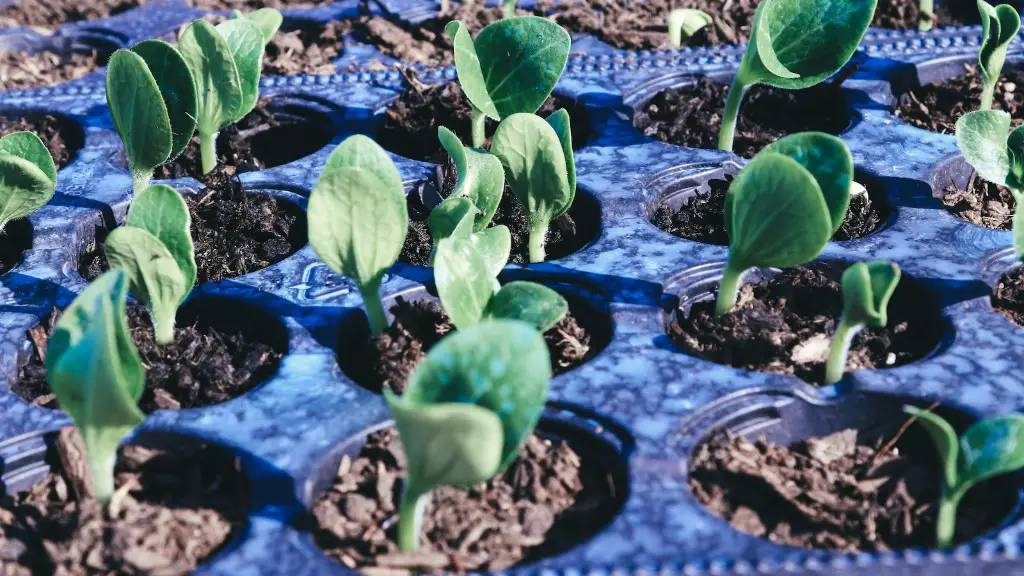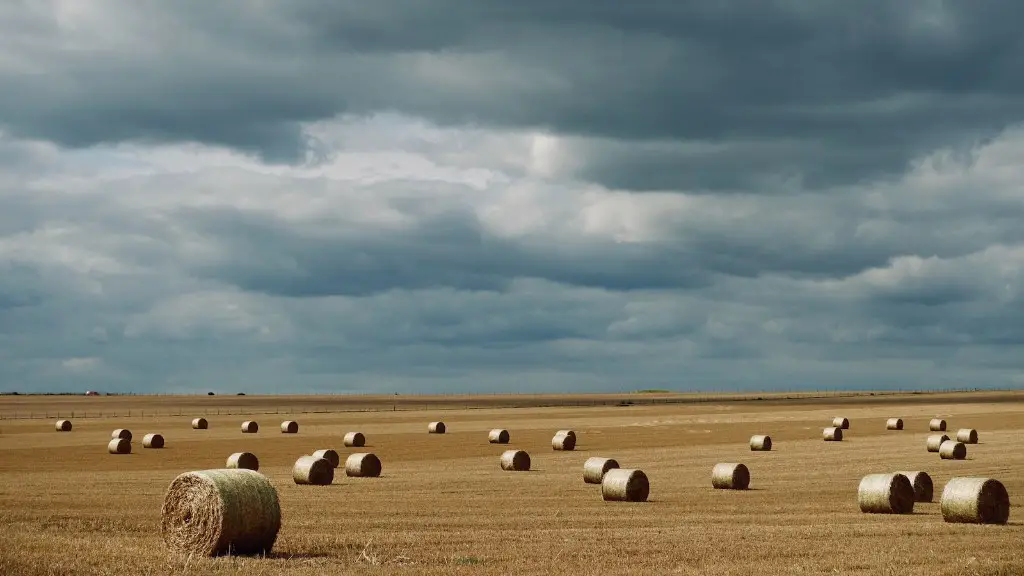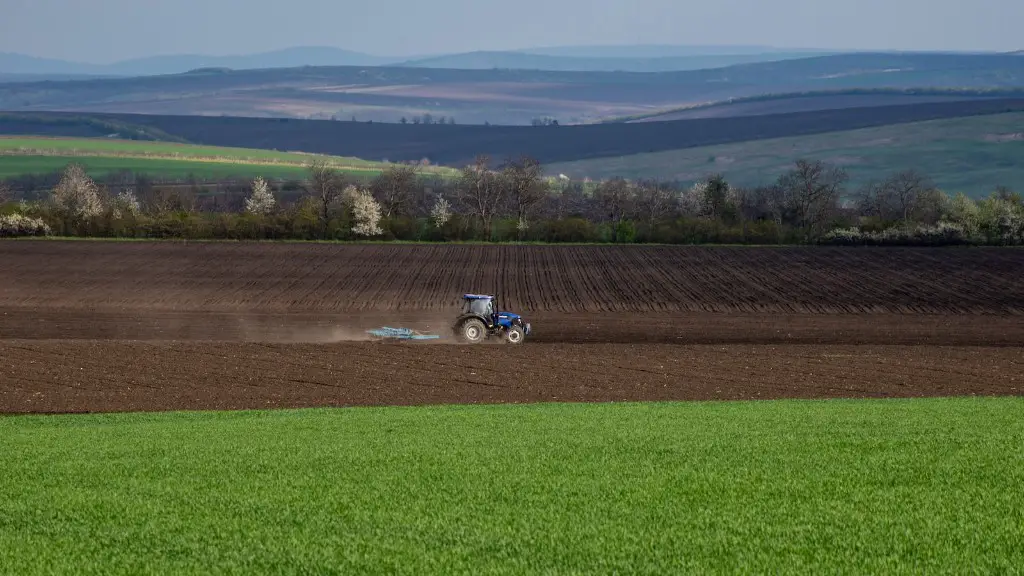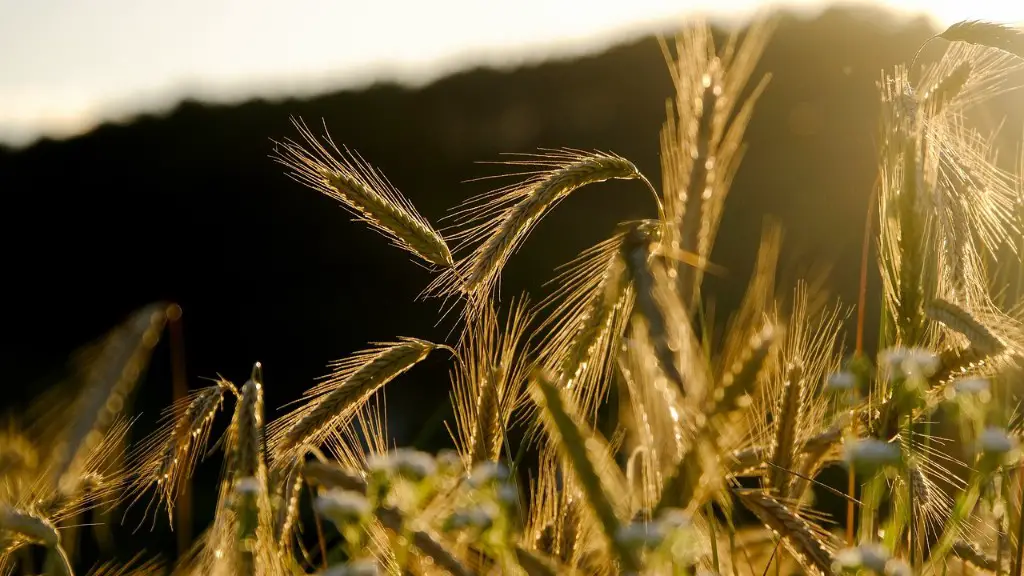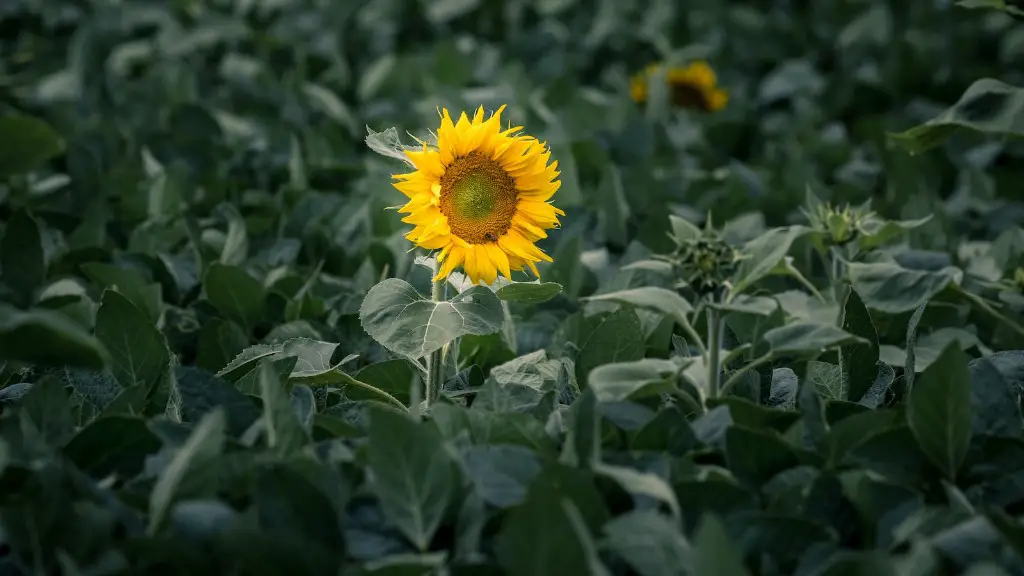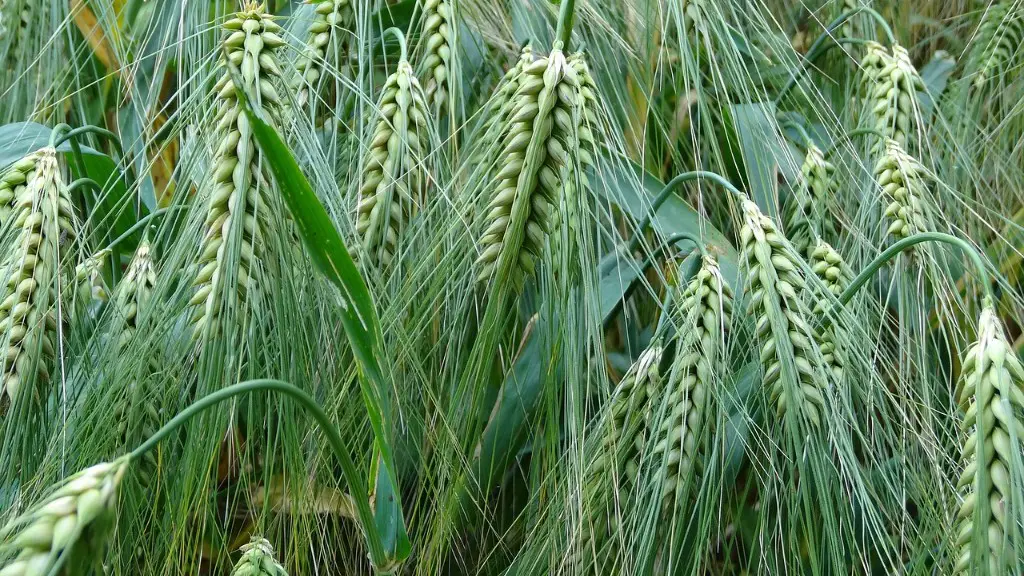There are several types of agriculture, each with their own distinct set of practices. The most common forms are subsistence, commercial, and mixed. Subsistence agriculture is the primary form of agriculture in many developing countries. It is typically defined as farming done primarily to produce enough food for the farmer and their family with little or no surplus for sale. Commercial agriculture, on the other hand, is done primarily for profit. mixed agriculture is a type of farming that combines both subsistence and commercial practices.
There are three types of agriculture: subsistence, commercial, and mixed. Subsistence agriculture is subsistence-based farming in which farmers grow crops and rear livestock primarily to feed themselves and their families, with any surplus typically sold or exchanged within the local community. Commercial agriculture is large-scale farming that is geared towards producing cash crops for sale off the farm, either in domestic markets or in international markets. Mixed agriculture is a type of farming that combines both subsistence and commercial production, with farmers growing crops and livestock both for their own consumption and for sale.
What are the other forms of agriculture?
Mixed crop and livestock: This type of commercial agriculture includes growing crops and raising animals together.
Dairy farming: Dairy farming is a type of commercial agriculture that focuses on producing milk and other dairy products.
Grain farming: Grain farming is a type of commercial agriculture that focuses on growing crops like wheat, corn, and rice.
Livestock ranching: Livestock ranching is a type of commercial agriculture that focuses on raising animals like cattle, sheep, and pigs.
Mediterranean agriculture: Mediterranean agriculture is a type of commercial agriculture that is common in the Mediterranean region and focuses on crops like olives and grapes.
Commercial gardening and fruit farming: Commercial gardening and fruit farming are types of commercial agriculture that focus on growing fruits and vegetables.
The agricultural sector is a critical part of the economy, providing food and other products for consumption and export. The sector is composed of many different sub-sectors, each of which contributes to the overall production of goods and services. The major sectors related to agriculture include: food and beverage manufacturing; food and beverage stores; food services and eating/drinking places; textiles, apparel, and leather products; and forestry and fishing. Each of these sectors plays a vital role in the agricultural economy and together they provide a significant contribution to the overall economy.
What are the most common types of agriculture
Shifting cultivation is a type of agriculture where farmers move their crops from one plot of land to another. This is often done in order to allow the land to recover from being used for farming.
Subsistence farming is a type of agriculture where farmers grow enough food to feed themselves and their families. They do not usually grow any extra food to sell.
Pastoralism is a type of agriculture where farmers keep animals, such as sheep or cows. The animals graze on the land, and the farmers use their products, such as wool or milk.
Intensive farming is a type of agriculture where farmers use a lot of technology and chemicals to grow crops. This type of farming often results in large amounts of food being produced.
There are four main branches of agriculture, livestock production, crop production, agricultural economics, and agricultural engineering. Each branch has its own focus and specialization. Livestock production is concerned with the raising of animals for meat, milk, wool, and other products. Crop production focuses on the growing of plants for food, fuel, and other materials. Agricultural economics is concerned with the economic aspects of agriculture, such as market analysis and farm management. Agricultural engineering is concerned with the design and implementation of agricultural equipment and systems.
What are the 12 types of agriculture?
Farms come in all shapes and sizes, and there are many different types of farming to choose from. Aquaculture farming is one type of farming that is becoming increasingly popular. Cooperative farming is another type of farming that is growing in popularity. Hay farming is also a type of farming that is popular among many farmers.
Agricultural practices can be broadly classified into two categories: subsistence farming and commercial farming. Subsistence farming is carried out to produce enough food for the farmer and their family to live on, with any surplus being sold or bartered. Commercial farming is carried out with the primary goal of generating income, often through the sale of crops or livestock.
Pastoral farming is a type of subsistence farming in which livestock is the primary source of income and food. Crops are often grown as a secondary source of food or to feed the livestock. Arable farming is a type of commercial farming in which crops are the primary source of income. Shifting agriculture is a type of subsistence farming in which farmers move their crops and livestock to new areas every few years to allow the land to recover from the previous farming cycle.
Mixed farming is a type of farming in which both crops and livestock are raised. Nomadic agriculture is a type of subsistence farming in which farmers move their crops and livestock to new areas on a regular basis. Sedentary agriculture is a type of commercial farming in which farmers do not move their crops or livestock. Subsistence farming is a type of farming in which farmers grow enough food to feed themselves and their families. Commercial farming is a
What are the 11 branches of agriculture?
There are many branches of agriculture, each of which focuses on a specific area of study. Agronomy is the science of soil management and crop production. Horticulture is the science of fruit, vegetable, and ornamental plant production. Plant breeding and genetics is the science of improving plant varieties. Seed science is the study of seeds and their role in plant reproduction. Crop physiology is the study of how plants grow and develop. Plant pathology is the study of plant diseases. Plant protection is the science of pest management. Soil science is the study of soil properties and management.
Farming can be broadly classified into two categories: subsistence farming and commercial farming. Subsistence farming is subsistence-oriented and includes raising crops and livestock primarily for food and shelter. Commercial farming is production-oriented and focuses on generating revenue through the sale of crops and livestock.
Dairy farming is a type of commercial farming that involves the raising of cows for milk production. Commercial grain farming is another type of commercial farming that involves the growing of grains such as wheat and corn for sale. Plantation farming is a type of commercial farming that involves the growing of crops such as coffee and cocoa on large plantations. Intensive subsistence farming is a type of subsistence farming that utilizes high levels of inputs in order to produce high yields.
What are the 3 components of agriculture
CA is a set of agricultural practices that focus on maintaining and improving soil health. The three components of CA are minimum soil disturbance, soil cover, and crop rotation/association. These practices can help improve soil fertility, increase crop yields, and reduce the need for chemical inputs.
Subsistence farming is a form of farming in which nearly all of the crops or livestock raised are used to maintain the farmer and the farmer’s family, leaving little, if any, surplus for sale or trade. Preindustrial agricultural peoples throughout the world have traditionally practiced subsistence farming.
Subsistence farming generally requires far less labor than commercial farming, as the family members work together to meet their basic needs. This type of farming is often very labor-intensive, as the farmers must clear the land, plant the crops, and harvest them by hand.
Despite the challenges, subsistence farmers often have a deep connection to the land they farm, as it has been passed down through generations.
What are the 5 main branches of agriculture?
There are five major branches of agriculture: agronomy, horticulture, agricultural engineering, animal science, and agricultural economics. Agriculture is the science and art of cultivating plants and animals for food, fiber, and other products. Agronomy is the science and technology of producing and using plants for food, fuel, fiber, and land reclamation. Horticulture is the science and art of growing fruits, vegetables, flowers, and ornamental plants. Agricultural engineering is the application of engineering principles to the design, construction, and operation of agricultural facilities and equipment. Animal science is the study of livestock production, including the breeding, feeding, and management of domestic animals. Agricultural economics is the study of the economic factors that affect agriculture, including the markets for agricultural products, government policies, and international trade.
Subsistence agriculture is a type of agriculture in which farmers grow crops and raise livestock primarily for their own needs, rather than for sale. This type of agriculture is typically found in developing countries and is often the only form of agriculture that can be practiced in areas with little arable land.
Industrialized agriculture, on the other hand, is a type of agriculture that employs large-scale mechanized methods, such as monoculture and deforestation, to maximize crop yields. This type of agriculture is typically found in developed countries and is responsible for the majority of the world’s food production.
What are the 8 branches of the agricultural industry
Agriculture is the science, art and practice of cultivating plants and animals for food, fiber and other products used to sustain and enhance human life. Agriculture was the key development in the rise of sedentary human civilization, whereby farming of domesticated species created food surpluses that allowed people to live in cities. The study of agriculture is known as agricultural science. Agriculture is a broad multidisciplinary field that encompasses the parts of exact, natural, economic and social sciences that are used in the practice and understanding of agriculture. Modern agriculture includes agronomy, horticulture, animal husbandry, environmental science, agroforestry and forestry.
Aquafarming is the farming of aquatic animals and plants, usually in man-made tanks or ponds. Aquaculture is a form of aquafarming that involves the cultivation of aquatic animals, such as fish, shellfish and crustaceans, in freshwater or marine environments.
Farming is the practice of growing crops and keeping livestock. Animal husbandry is the practice of raising animals for meat, milk, eggs, wool, leather or other products.
Apiculture, or beekeeping, is the practice of keeping bees in man-made hives for the purpose of collecting their honey
Agriculture is the science, art, and practice of dealing with the production, processing, and marketing of food, livestock, and other agricultural products. It includes the study of the physical and chemical properties of the soil and plants, the raising of crops, the breeding and husbandry of livestock, and the storage, processing, and marketing of agricultural products.
What are the 6 different farming sectors?
The term “combinable crops” refers to those crops that can be grown together in the same field. This includes crops such as horticulture, potatoes, livestock, and poultry. The term “combinable crops” is often used in the context of crop rotations, as it is important to rotate crops in order to maintain soil fertility and prevent pests and diseases from becoming established.
There are various types of agriculture practiced around the world. Each one has its own unique benefits and drawbacks.
Nomadic herding is a type of agriculture that is often used in very dry or arid climates. It is a very efficient way to use resources, but it can be difficult to maintain a consistent food supply.
Livestock ranching is a type of agriculture that focuses on raising livestock. It can be very intensive and require a lot of land, but it can also be very profitable.
Shifting cultivation is a type of agriculture that is often used in areas where the soil is not very fertile. It involves growing crops for a few years and then moving to a new area. This type of agriculture can be very labor-intensive.
Intensive subsistence farming is a type of agriculture that is often used in areas with limited resources. It is a very efficient way to use resources, but it can be difficult to maintain a consistent food supply.
Commercial plantations are a type of agriculture that is often used to produce crops for export. They can be very profitable, but they can also be very labor-intensive.
Mediterranean agriculture is a type of agriculture that is often used in areas with a Mediterranean
What are 5 agricultural activities
Agriculture is the art and science of cultivating the soil, growing crops and raising livestock. Agricultural practices include soil preparation, planting, irrigation,Weeding, Harvesting, and storage.
Soil preparation: Before raising a crop, the soil in which it is to be grown is prepared by ploughing, levelling, and manuring.
Sowing: Selection of seeds of good quality crop strains is the primary stage of sowing.
Manuring: Manuring is the process of adding organic or inorganic matter to the soil to enhance its fertility.
Irrigation: Irrigation is the process of providing water to the crops like by sprinkling, flooding, drip.
Weeding: Weeding is the process of removing unwanted plants from the field.
Harvesting: Harvesting is the process of gathering the crops from the field when they are ripe.
Storage: Storage is the process of preserving the crops after harvest.
agricultural practices are very important in order to have a successful harvest. The main steps for agricultural practices include preparation of soil, sowing, adding manure and fertilizers, irrigation, harvesting and storage. Each step is important and should be done correctly in order to produce a good crop.
Conclusion
There are several forms of agriculture, including subsistence agriculture, commercial agriculture, marginal agriculture, and intensive agriculture. subsistence agriculture is the type of agriculture that is practiced in order to meet the needs of the farmer and their family. Commercial agriculture is the type of agriculture that is practiced in order to generate a profit. Marginal agriculture is the type of agriculture that is practiced on land that is not well suited for other types of development. Intensive agriculture is the type of agriculture that is practiced in order to maximize production.
Agriculture takes many different forms, all of which are important in their own ways. Each form of agriculture has its own unique benefits and drawbacks, and all are essential to the global food supply. Without diversity in our agricultural practices, we would be putting the entire food system at risk.
